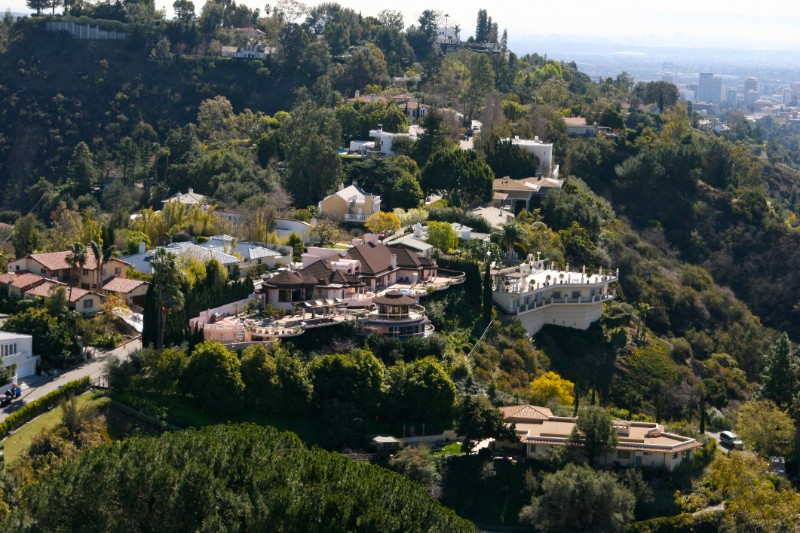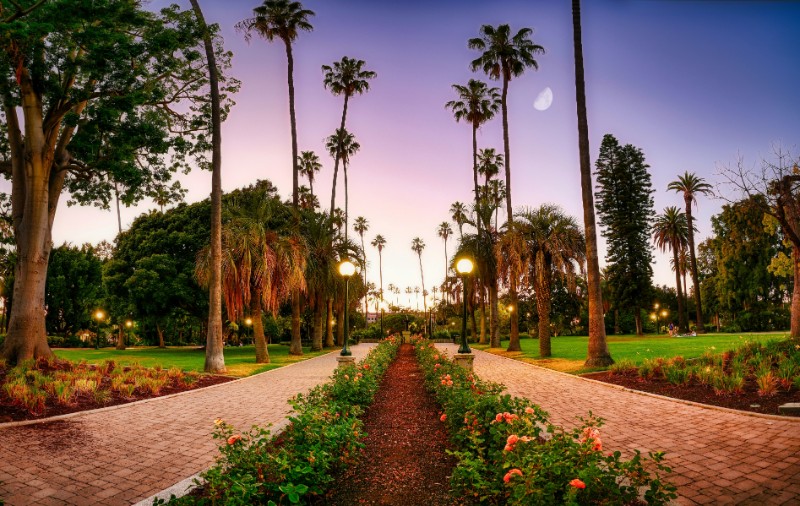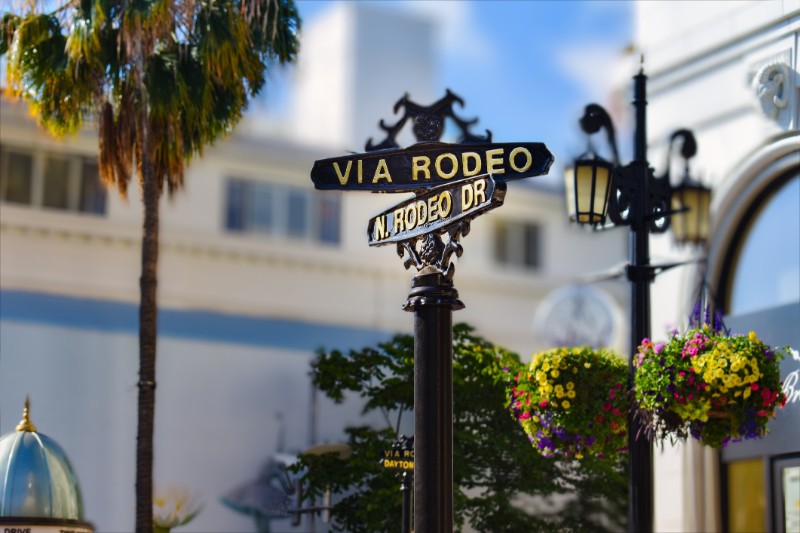Behind the glitz and glamor: Exploring the lore of Beverly Hills

Beverly Hills is, without a doubt, one of the most recognizable and prestigious cities in the world. Known for its lifestyle of luxury and affluence, this iconic locale has been cemented in popular imagination with the help of glamorous Hollywood portrayals. It’s also home to some of the most lavish homes in the United States and a long list of high-profile, high-net-worth residents.
But why exactly is Beverly Hills so rich in prestige and how did its economic prosperity come to be? There’s more than one answer. Let’s take a deep dive into the city’s fascinating history and explore what’s behind the glitz and glamor of one of the country’s most popular area codes.
Table of Content
THE LORE OF BEVERLY HILLS
Beverly Hills hardly needs an introduction. This iconic city in Los Angeles County makes up part of the area dubbed the Platinum Triangle, which consists of Beverly Hills, Bel Air, and Holmby Hills. As of 2022 Census estimates, more than 32,000 people call the city home.
Beverly Hills is synonymous with luxury and upscale living. This comes as no surprise – its high-earning residents are just steps away from world-class shopping districts, top-of-the-line restaurants, and famous attractions. More than that, owning a piece of Beverly Hills luxury real estate signifies prestige and success. The city has a lineup of palatial homes for the rich and famous, attracting affluent buyers since its inception more than a century ago.
How did the city achieve this legendary status? To truly understand the lore, let’s trace Beverly Hills’ history from its earliest days.
Native American inhabitants
Long before Spanish settlers reached the area, Beverly Hills offered a different type of wealth: it had abundant streams of water, a valuable resource in the arid plains of Southern California. Drawn to its natural beauty and plentiful resources, the native Tongva people inhabited the land and considered it a sacred site. For centuries, they lived peacefully amidst the land’s bountiful flora and fauna, enjoying the beauty of flowers of all colors, sprawling meadows, and a wide variety of game.
European settlement & ranch origins
The first European settlers arrived in the area in 1769, led by Don Jose Gaspar de Portola. In 1838, El Rodeo de las Aguas was granted to Maria Rita Valdez Villa, who turned the land into a successful adobe ranch with cattle and livestock. As the years passed, the land was passed on to many new owners, but droughts and major economic downturns kept it from prospering.
The early 20th century
At the turn of the 20th century, Burton E. Green, a real estate developer and oil tycoon, saw the potential of the land that was once part of a Spanish ranch. After failed oil explorations, he and his partners set their sights on creating a luxurious residential community that would rival the best in the world. They transformed the bucolic Morocco – as part of the land was then known – into the sophisticated Beverly Hills, a name inspired by Green’s and his wife’s fondness for Beverly Farms in Massachusetts.
The mastermind behind Beverly Hills’ distinctive layout was landscape architect Wilbur D. Cook, who designed the city’s signature curved streets and palm-lined boulevards. In 1912, the iconic Beverly Hills Hotel was completed, drawing more affluent visitors and settlers to the area. Two years later, Beverly Hills officially became a city.
Hollywood and the Roaring 20s
Hollywood’s Golden Age in the 1920s played a significant role in the Beverly Hills mythology. It was during this time that the movie industry reached new heights of profitability and success, which allowed many actors, producers, and studio executives to build lavish estates in the city.
The construction of the Beverly Hills Hotel, aptly nicknamed the Pink Palace, inspired Hollywood actors Mary Pickford and Douglas Fairbanks to buy an old hunting lodge at 1143 Summit Lodge and transform it into their very own mansion. The rest was history. Purchased in 1919, Pickfair, as the mansion was called, ushered in a wave of Hollywood stars and executives. Luminaries like Charlie Chaplain, Gloria Swanson, Will Rogers, John Barrymore, Jack Warner, and Clara Bow built their homes in the city, taking it to new heights of glamor and opulence.
In the next few years, as more high-profile residents flocked to Beverly Hills, the population grew at a rapid pace of more than 2,000 percent. It certainly helped that the place was marketed as the “center of the next million.”
The construction of a wooden racetrack in the city’s southern portion added to its allure. The Speedway was the site of many exciting races that were broadcasted on radio, attracting thousands of spectators and celebrities.
POST-WAR AND MODERN BEVERLY HILLS
Even after the Second World War, Beverly Hills remained a place of glamor and prestige. It was especially known for high-end shopping and attracted well-heeled individuals who desired the finer things in life.
The demand for luxury living exploded in the 1950s, leading to intensive growth and housing shortages. Unfortunately, some developers resorted to drastic measures, altering the landscape by leveling parts of the surrounding mountains to make room for new residences. Thankfully, with slower population growth in recent years, such drastic measures are no longer necessary.
Two key factors further solidified Beverly Hills’ fame during this era. The first was the rise of the Golden Triangle, a luxury shopping mecca with Rodeo Drive at its heart. This retail destination became a magnet for fashionistas and celebrities alike, further solidifying Beverly Hills’ image as a playground for the wealthy.
Hollywood capitalized on the Beverly Hills mystique, creating numerous fictional portrayals of the city. Shows like “The Beverly Hillbillies” and “Beverly Hills 90210” not only entertained audiences but also gave the city even greater cultural influence.
WHY IS BEVERLY HILLS SO RICH IN CULTURAL AND ECONOMIC INFLUENCE?

- The location
Beverly Hills boasts a prime location between the picturesque Santa Monica Mountains and the Pacific Ocean, which means it enjoys a year-round temperate climate and abundant natural resources. This favorable natural setting provided an attractive starting point for further development, attracting wealthy investors and entrepreneurs who saw the neighborhood’s potential as a real estate hotspot.
- Strategic planning
The development of Beverly Hills wasn’t left to chance, one reason why it remains famously rich and upscale. Zoning regulations and stringent planning initiatives prioritized low-density housing and preserved sizable green spaces, fostering a sense of exclusivity and tranquility. This deliberate, strategic approach made the city stand out from other metropolitan areas, which were considered too crowded by many luxury buyers who desired privacy above all else.
- The “Hollywood Effect”
The rise of Hollywood and its proximity to Beverly Hills played a pivotal role in the city’s economic trajectory. Celebrities and film industry moguls bought luxurious homes and soon turned the city into a universal symbol of wealth and success. This “star power” helped propel real estate values in the area, attracting further investment and solidifying Beverly Hills’ reputation as a premier address.
- Strong financial ecosystem
Beyond the glitz and glamor, a robust financial ecosystem fuels Beverly Hills’ wealth and remains one of the reasons why the city is the choice of the rich and famous. The city actively welcomes savvy investors who can spot lucrative opportunities in luxury retail, entertainment, and high-end services. These sectors thrive here and bolster the city’s economy.
Additionally, many tech moguls searching for a foothold in the Californian market set their sights on Beverly Hills. This constant influx of capital and entrepreneurial spirit plays a large role in sustaining Beverly Hills’ wealth.
- Adapting to the times
Beverly Hills’ ability to adapt and evolve underscores its continued prosperity. The city’s real estate market adapts to technological advancements, integrating smart home technologies and catering to trends like green living and wellness escapes. This dynamism makes sure that Beverly Hills stays important and appealing to future generations of luxury lovers.
RELIVING HISTORY: BEVERLY HILLS’ MOST ICONIC LANDMARKS
There are many reasons why Beverly Hills is so rich in attractions. It’s also a cultural epicenter for Southern California, with several landmarks that showcase the city’s vibrant history and influence.

Rodeo Drive
Synonymous with the most upscale shopping, Rodeo Drive offers an impeccable lineup of some of the biggest brands in fashion. Rodeo Drive is one of the most expensive streets in the world and houses over 100 of the industry’s leading names, including Alexander McQueen, Balenciaga, Hermes, and Saint Laurent, to name a few.
The Beverly Hills Hotel
Located along Sunset Boulevard, this legendary five-star hotel has welcomed numerous stars and VIPs since its establishment in the 1920s, providing unmatched accommodations and incredible food and drink. It served as the stomping ground of the who’s who in the 1920s/1930s Los Angeles social scene, and to this day, continues to be one of the most exclusive hotels in LA.
The Saban Theatre
Formerly known as the Fox Wilshire Theater, this Art Deco cinema is one of Wilshire Boulevard’s historic gems. Designed by renowned architect S. Charles Lee, the Saban has since been preserved and restored to adapt to modern technical needs.
Greystone Mansion & Gardens
Greystone Mansion is a historic treasure in the heart of Beverly Hills. It was once the home of the Doheny family, who made their fortune from oil. Edward L. Doheny gave this magnificent estate to his son as a gift. The elegant mansion features stunning Tudor Revival-style architecture and is surrounded by 18.5 acres of lush landscaping. Purchased by the city of Beverly Hills in 1965, the property now serves as a public park and the location of many Hollywood productions, from movies to TV shows.
Virginia Robinson Gardens
Beverly Hills’ first luxury estate was built in 1911. It was once the home of Virginia and Harry Robinson, famed retail entrepreneurs known for the Robinson department stores. At the time, the Robinson estate was the site of many lavish celebrations, with a guest list that included the likes of the Duke and Duchess of Windsor.
This sprawling abode is now a historic landmark. Located just behind the Beverly Hills Hotel, the home features impeccable Mediterranean-style architecture and acres of exquisite gardens.
Notable luxury homes in Beverly Hills
Over the years, Beverly Hills’ stellar residents fueled the city’s reputation for opulence by building spectacular mansions and estates. Many of these properties still stand to this day, counting new generations of entertainment and business luminaries as their occupants.
These are some of the most significant homes in the city today:
9955 Beverly Grove Drive – Formerly owned by Old Hollywood icon Katharine Hepburn and renowned television personality Lee Phillip Bell, the estate at 9555 Beverly Grove Drive was bought by basketball superstar Lebron James for $36.7 million in 2020. The property sits on 2.5 acres of land and includes 9,100 square feet of living space with four bedrooms and eight bathrooms.
The Goldwyn Estate – This historic Beverly Hills home was originally the property of Samuel Goldwyn, a pioneering film producer and one of the founding members of Metro-Goldwyn-Mayer Studios. Today, the sprawling 10,982-square-foot mansion is owned by Taylor Swift, who purchased the home in 2015 for $25 million. Declared a National Historic Landmark in 2017, the property, located at 1200 Laurel Lane, features seven bedrooms and ten bathrooms.
Greenacres – In 1929, Harold Lloyd, one of the most famous comedians of the silent film era, decided to build one of the most impressive estates in Hollywood history. He hired Sumner Spaulding and A.E. Hansen to create his dream home: a 15-acre, 44-room mansion that featured Tudor Revival-style architecture, a golf course, and an 800-foot canoe pond. Lloyd hoped to turn his home into a public museum that would preserve the legacy of Old Hollywood, and while the wish was fulfilled, the museum did not stay open for long. The estate is now a protected historic landmark and was bought and restored by billionaire Ron Burkle.
2727 Benedict Canyon – Famously known as Cher’s Beverly Hills mansion, this gorgeous Benedict Canyon home is fabled for its privacy and exclusivity. Cher lived in the property for much of the 1970s before selling it to Beverly Hills Cop star Eddie Murphy in 1994. It was Murphy who turned the mansion into an equestrian estate, purchasing four neighboring parcels to complete the 14 acres, to which he added five stables. The main house spans 20,000 square feet.
EXPLORE BEVERLY HILLS WITH THE FINEST LOS ANGELES REALTOR
Find the perfect home in Beverly Hills, CA with Joyce Rey, the premier luxury Realtor in the Los Angeles area. Joyce is an industry legend with nearly $6 billion in sales to her name and a portfolio of iconic properties. She has been recognized as “The Grand Dame of Real Estate,” “Billionaire’s Broker,” and “The First Lady of Luxury Real Estate” by various publications. Throughout her career, she has counted Fortune 500 executives and celebrities among her clients and has facilitated the sale of many iconic Beverly Hills homes.
Your dream property in 90210 awaits. Contact Joyce Rey and her team today at 310.285.7529 or send her a message through this website.

